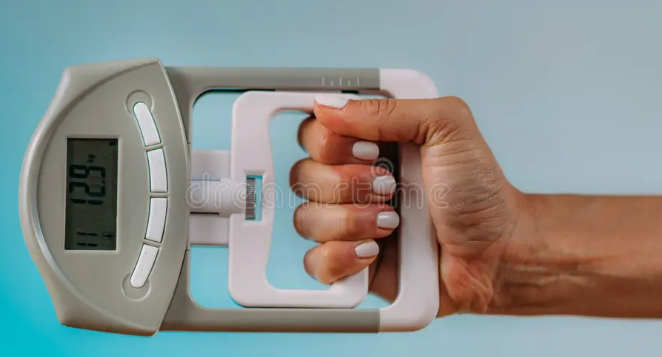Simple Self-Tests: 5 Ways to Gauge Your Longevity and Boost Your Healthspan
Want to live a longer, healthier life? Science suggests these quick, free, at-home tests can offer valuable insights into your health and even help you improve your lifespan.
(By Jeff Haden)
The desire to live longer and healthier is a universal ambition, driving a booming anti-aging market attracting notable entrepreneurs like Jeff Bezos and Peter Thiel. While expensive biological age tests are available, you don't need to spend a fortune to get an indication of your longevity prospects.
It's important to remember that these simple tests, much like more complex biomarker assessments, provide indications, not certainties. Passing a test doesn't guarantee a long life, and conversely, a poor score isn't a definitive death sentence. However, these assessments can be powerful motivators to improve your overall health and fitness.
5 Ways to Gauge Your Longevity and Boost Your Healthspan
Here are five straightforward tests you can perform yourself:
1. The Walking Test
How it works: Determine how quickly you can walk one mile, or use a fitness tracker to gauge your pace. Aim to walk as briskly as you can.
What it indicates: A University of Sydney study found that people who maintain a fast walking pace (3-4 miles per hour) have a 24 percent lower risk of all-cause mortality. For individuals 60 or older, this benefit is even more pronounced, showing a 53 percent reduction in mortality risk. Researchers suggest that increasing walking pace is a simple way to improve heart health and reduce the risk of premature death.
Bonus: Faster walking is also linked to improved cognitive function, including better memory, reasoning, sharpness, and judgment.
5 Ways to Gauge Your Longevity and Boost Your Healthspan
2. The Pushup Test
How it works: After a warm-up, perform as many full pushups as you can without resting or putting your knees down.
What it indicates: Harvard researchers discovered that men capable of doing 40 or more pushups were 96 percent less likely to experience a cardiovascular event over 10 years compared to those who could do 10 or fewer. Surprisingly, pushup capacity was a stronger predictor of reduced cardiovascular disease risk than aerobic capacity.
· Target (Men): 40+ pushups (excellent). 15-20 (good). 10 or fewer (higher risk).
· Target (Women): Based on Army standards (40-60% fewer than men), aim for 16-20 pushups (excellent). 8-10 (good). 5 or fewer (higher risk).
· Improvement Note: Every pushup beyond the baseline (10 for men, 5 for women) decreases your heart disease risk.
5 Ways to Gauge Your Longevity and Boost Your Healthspan
This test assesses muscle strength, cardiovascular fitness, and flexibility—all vital for aging healthily.
3. The 10-Second Balance Test
How it works: Lift one leg until your thigh is parallel to the ground and try to balance on the other foot for 10 seconds.
What it indicates: A study in the British Journal of Sports Medicine found that individuals aged 50 and above who couldn't pass this 10-second balance test had a higher risk of dying from any cause over the next decade. While correlation, rather than causation, poor balance, strength, flexibility, or being overweight can make this test more challenging, all factors are associated with a higher mortality risk.
5 Ways to Gauge Your Longevity and Boost Your Healthspan
4. The Sit-Rise Test (SRT)
How it works: Stand barefoot, cross one leg over the other, and lower yourself to a sitting position. Then, without using your hands, knees, elbows, forearms, or sides of your legs for support, try to stand back up.
Scoring: Start with 10 points. Subtract 0.5 points for each time you use a hand, knee, forearm, or leg side or lose balance.
What it indicates: A study in the European Journal of Preventive Cardiology showed that individuals scoring less than 8 points were twice as likely to die within six years, while those scoring 3 or less were more than five times as likely to die compared to those scoring above 8.
Good News: Improving your SRT score is linked to a 21 percent decrease in mortality. Like other tests, it's a strong indicator of flexibility, balance, and muscle strength.
5 Ways to Gauge Your Longevity and Boost Your Healthspan
5. The Grip Strength Test
How it works (Options)
· Dynamometer: If you have one, use it to measure your handgrip strength and compare the result to the charts.
· Pull-up Bar Hang: Hang from a pull-up bar for as long as you can. Target 60 seconds for men, 30 seconds for women.
· Tennis Ball Squeeze: Squeeze a tennis ball as hard as you can for as long as possible. 15-30 seconds is good, 90+ seconds is excellent.
What it indicates: A 2018 British Medical Journal study found handgrip strength to be a strong indicator of overall body strength and muscle mass. Lower grip strength correlates with a higher incidence of cardiovascular disease, chronic obstructive pulmonary disease, and various cancers. A decrease of 6 pounds in grip strength for women and 11 pounds for men correlates with a 16 percent higher risk of dying from any cause.
5 Ways to Gauge Your Longevity and Boost Your Healthspan
The Ripple Effect of Improvement
The beauty of focusing on these simple tests is the "improvement ripple effect." Working to enhance one area of your fitness—like your walking speed, pushup count, or grip strength—naturally leads to improvements in other aspects of your health. For instance, many people find that regular exercise organically encourages healthier eating habits. One study even found that consistent exercisers still enjoyed high-calorie foods but experienced reduced cravings for them.
By making small, consistent efforts to improve these basic fitness metrics, you're not just investing in potential longevity but also in how good you feel in your daily life.
Labels: Simple Self-Tests: 5 Ways to Gauge Your Longevity and Boost Your Healthspan







